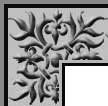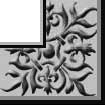

INDEXReading Revolutions: Ideas for Teaching Objective
Learning Activities: Literacy ActivitesUse the primary classroom text as stimulus for classroom literacy.Instructional texts (reading comprehension and writing composition)
The activities described below will enhance and reinforce the focus of the primary text.
The activities can facilitate multi-age groupings, interdisciplinary activities, and cooperative groups.Ask the students to bring in a collection of "how to" (process analysis) texts, for example, how to build a cabinet, instructions for programming the video, or a recipe. Some DIY stores have a collection of guides for a variety of jobs. Other texts including instructions are Gardening books and the leaflets that come with computer games, or Internet CDs. In particular, look at the instructions on how to upload new software or the 'help' files for a program already in use in your school.Divide the class into groups of three to five. Make sure each group has at least three different types of instructional text. Give them time to look at each one and then ask them to put the instructions an order of preference.
Bring the class together and ask each group to state their preferences, (without explanation). Now ask each group to provide three reasons why the 'best was the best' and two reasons why their 'worst was the worst'. As a class, compare what groups feel is important in the instructional text and use this information to design a list of do's and don'ts when giving instructions.
Encourage children to consider:
Audience (is the text appropriate for who will be reading it?) Language (how hard or easy is the text to read? Is it written in first person, third person or in another manner?) Sequence (How is the text organised? Are there connectives like bullets or numbers?) Presentation (graphics, photos, cartoons etc) Layout (visual impact on the page - is it an A4 sheet, a booklet, etc)
Children might also consider if there is too much or too little information.
They should decide how to improve the piece of instructional text they considered the worst. They should also re-evaluate their original decisions.Using the list of important aspects of instructional text, ask the children to write their own text for a child of a similar age. The text could be:
Instructions on walking to school including safety aspects How to be safe in the house by yourself What to do if a stranger approaches you. What to do if you get home and your parents aren't there.
Recounts of events (Writing composition, including some connectives work)Using all the accounts of the witnesses, children can compile a full and comprehensive report for your 'Police Chief Inspector'. Use planning time to discuss various areas of the report. Ask children to contribute to the discussion and keep notes for their own planning.Sentence level work time can be used to discuss use of connectives. Create a workable list and if possible create a group plan of the forthcoming report including appropriate connectives.
Introduction - What information is needed? How much will the Chief Inspector know? Where, when, who, why etc?
Sequence - In which order will you report the events - as you found out about them or as they actually happened? Which will make most sense to the Inspector?
Relevance of witness statements - Will you quote any of the people who gave reports? Can you refer to any? Are there some people you don't need to tell your Chief Inspector about? Remember, only include relevant facts but support your work with evidence (quotations).
Use of Language - Remember who you are writing for! How will you address the Chief Inspector? Will you use slang? Discuss formal and informal writing.
Conclusion - How will your report end? What did you find out? Is there any more work you as an Missing Persons Investigator would like to carry out? Remember - the Chief Inspector likes bright young things - you might get a promotion!
The text the class is reading can provide opportunities to write letters:
1. A letter of apology one character to another.
Why would a character apologise; what might they say? Would they try to explain their behaviour? Would there be need for a letter of confession? Accusal?
2. A letter from one character regarding safety issues at work, school, or exposing something that a character(s) may be able to control or change. How could the issue be changed or controlled? Outline what the author of the letter envisions.
A letter to the press. Do you think that the journalists will be sympathetic towards the issue or the author of the letter?Use 'word' or sentence level time to plan the letters carefully making an appropriate vocabulary list. Aspects of formal writing and use of connectives should also be encouraged where appropriate. Include work on introductions and how to end a letter.
Choose one of the letter ideas and create a whole class plan of the letter to be written.
Discuss formal and informal approaches.
- To whom will the letter be addressed?
- How shall you address this person?
- From whom shall the letter be? Encourage creativity, for example, people from the scenario, important members of the community.
- What kind of language would be used? What would a person of the chosen age 'sound like? What would be their tone, voice, diction level? Is the writer a child or an adult?
Students should then write a letter based on the whole class plan and use plenary time to evaluate their own and each other's work. To further develop letter-writing skills, children could choose to create another letter using the scenario.
Each letter should be planned using the guidelines from the discussion of the class-built letter and draft the parts - introduction, contents and conclusion.
Ask students to collect (and collect yourself), a number of newspaper or magazine articles relating to recent events that tie into the theme(s) of the class reading. Students can use the Internet to view up-to-date news articles and print out ones they would like to use or bookmark if they have a personal computer for class.Try bbc.co.uk/news or use a child-friendly search engine (yahooligans.com, excite.co.uk, ajkids.com, aol.com/netfind/kids) and type 'news UK'.
Together choose an article, which will fit the discussion needs outlined below.
Use word level/sentence level time to look at the article and identify important features.Introduction - What information is given to the reader to help them understand what is going on? Does the article give people's names, ages, where and when the article takes place?
Sequence - In what order does the article operate? Sometimes articles list events as they happen in chronological order; other articles start at the end, giving details of the present situation and then use the article to work through how the situation came about. (Women's magazines often use this format, first detailing the happy ending, followed by the events leading up to this point).
Connectives - How are the pieces of information joined together? Use a coloured pencil to underline words or phrases that act as connectives. Create a word bank of connectives to use in writing the article later.
Language - Look closely at the formal and informal language use of language. Make a note of useful or interesting phrases that might help in writing an article.
Illustrations or diagrams - What pictures are used to help retell the events?
Writing CompositionReport the events for the Evening News
Plan the article carefully, giving consideration to the points arising in discussion. Include illustrations where and if appropriate.DiariesConsider who might be interviewed for the article. Take quotes from the script as appropriate or 'invent' what people might have said to journalists.
Use plenary time to evaluate and share each other's articles.As an extension, use a women's magazine article approach. Imagine the journalist has gone to a character or author's home and tells the story from their point of view. Consider the sequence of the article and the kind of quotes, which will be used. Use word and sentence level time to investigate other articles before planning to write further examples.
If possible have an example of diary text to share with the children. Older children may enjoy extracts from the Adrian Mole or Anne Frank diaries, or you may wish to link with history work with some of the extracts from Queen Victoria's diary.There are plenty of diaries available online for you to select extracts from, ranging from those of war heroes to pop stars. This may involve some editing but should provide varied examples of writing style.
After sharing a few diary extracts, ask students to tell you how a diary is different from an ordinary story. Make a list of the key features of a diary:
Bearing all these points in mind, children can be asked to write a series of diary entries.Written in the first person - I went to the shops (not he went to the shops) Refers to events that have happened Refers to people in their life Emotions - diaries tell how people feel about what is happening and has happened. (This is a key point for writing composition later on). The diarist's particular point of view - Adrian Mole is a prime candidate for this kind of treatment. He manages to blame just about everyone else for his problems and often does not realise what is going on, although the reader does. Secrets - A diary is often a place where the writer can write down his or her thoughts and secrets in confidence. After some preliminary work on key features of a diary (see above), children are ready to use Lost to produce their own fictional diaries.Imagine, as the author or character, that you keep a diary. Write five entries, those for the two days before the event, the entry for the day itself, and the entries for two days afterwards.
Each day as a class, review ideas for what might be going on. Use word level and sentence level time to discuss what may happen in chosen persona's life (remember to include the clues given during the message stream). Also link to any grammar work that you wish to cover.
During text level work (20 - 30 mins.), ask the children to write the entry for that particular day. At the end of the week, have a sharing session where children can exchange diaries and compare with each other (you may wish to only write 4 entries and spend the fifth day 'finishing off').
Here are some ideas for discussion for each diary entry:
Two days before the event
Give a basic introduction to the everyday life of your chosen character/author. Remember, it is close to the persona's birthday. How is s/he feeling? What would he like for his/her birthday? Who are the persona's friends? How does the persona feel about their situation at work? In their society? Their placement in life?
The day of the event
What kind of party does the persona have? Is this an evening, morning or afternoon party? How long does it last? Who are the guests in attendance? What is the attire? Describe the decorations. Is the atmosphere festive? What kind of presents does s/he receive? Does s/he like his presents? What is/are the topic of conversation among the guests?
Writing new scenes into a storyAs a piece of narrative writing, using the third person, ask the children to write the full story, concentrating on the characters or author.Where does the persona go? What kind of conversations do they have? How do they feel, interact with others? If you wish to create the next chapters of the story, use the suggestions for the diary entries above.
Dr. Denise De Vito
Assistant Professor of Literacy Education Middle and Secondary Education
University of Maine at Farmington

